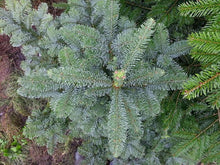Characteristics
The noble fir is also known under the common names noble fir, Pacific noble fir, Nobilistanne and silver fir. This conifer even has two botanical species names. Specifically, these are the botanical species names Abies procera and Abies nobilis. It can grow heights of up to 20 meters and widths of up to 5 meters. The growth can be described as conical and upright.
Pollination as well as needlework
Abies procera is monoecious. There is both cross-pollination and wind pollination. The individually arranged leaves have a simple leaf structure. The gray to silvery and light blue coloring can be defined as a characteristic feature.
Soil condition
Abies procera prefers a sandy and humus-rich soil with a significant nutrient content. A sunny location is gratefully received in addition to fresh soil moisture. If in doubt, it can also cope with a partially shaded location. However, Abies procera should not be expected to use a calcareous soil variation.
Provenance
Abies procera comes from the Pacific Northwest of the United States of America. She feels particularly at home in the Pacific climate. There she has worked her way up to a height of 1,680 meters. The silver fir now feels extremely at home on the old continent. That is why we can only recommend planting in the local area.
Uses
Abies procera has won over forestry with its advantages. The wood of the noble fir is ideally suited for use as construction timber and construction timber due to its significant rigidity. Abies procera wood is very popular in Japan. During the Second World War, the American military even used the wood of the silver fir for aircraft construction. For the friends of civil use, the compilation of a mixed coniferous forest in combination with the Douglas fir can be recommended. This significantly reduces the risk of damage to your forest ecosystem.




